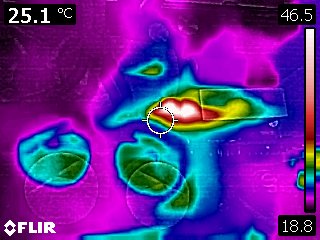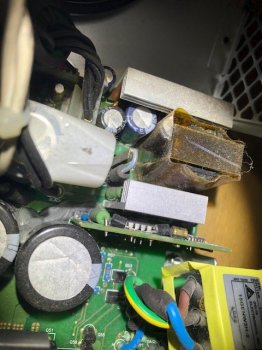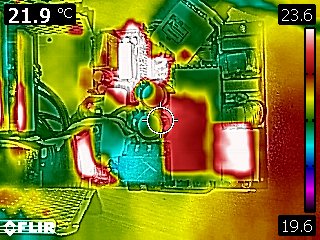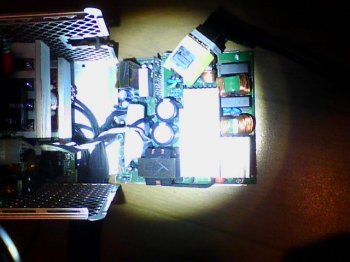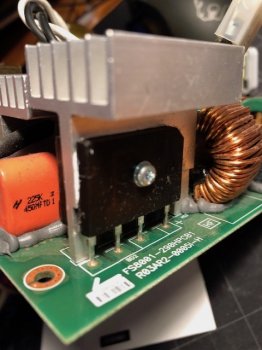I have one 2009 4.1 MPc.
UPDATED:
Machine keeps blowing fuses upon plugging it into socket for power. Once one fuse is blown (or fuse is blown one time) the machine runs just fine.
I now did have another look at the problem, and seems that the fuse will blow when cable is put in FIRST time. Fuse will blow no matter what socket i use, or what end of the cable is plugged first. That makes me understand this is not a mechanical problem, problem is not caused by temporary short upon forcing the cable in place. If the cable is unplugged for a few minutes the problem can be repeated. If unplugged for less then one minute problem will not repeat. This makes me think it has something to do with charge in capacitors.
First idea was mechanical problem or simple short to ground or something or that nature, from abuse or damage from physical force when cable has been connected. But this does not seem to be problem after looking into it more close.
Since the fuse will only blow upon first connection, and the PSU will run fine after that, i am thinking that it makes a temporary overload when charging the capacitors or something like that. Once they have been charged, it will no longer draw that current that makes the fuse blow. The machine can stay plugged for long time and not blowing fuses even if pressed to the max with stresstest or GPU stress.
Capacitors all have flat heads, i don't see any sign of damaged capacitor or otherwise burned components on the board.
After unplugging cable, it's about 5-10 sec then i hear a CLICK sound. That indicates a relay turning back off i would say.
Is there a possibility that there is something wrong with the relay? Is it common that the relay causes this kind of problems?
Using thermography camera it becomes clear some of the components on the PCB gets hotter than the others, even when PSU is not mounted into the machine. Temperature is about 40 degree C, that is about 20 degrees above room temperature. This is when PSU is idle, sitting on bench, power cable plugged in on AC side but no load on the DC side.
Area that becomes hot is around the heatsink in central part of picture. I am not sure if the heatsink is getting hot from the component attached to it, or if it is from the resistor R403 sitting next to it. (camera has to low resolution to show exact what component is hot). On the image it looks like more parts are hot, but that is just thermal reflection from the shiny large heatsinks.
Anyone with insight on how these PSU work have any good ideas about what part is failing?
OLD POST:
Something makes me think previous owner has damaged the PSU by appying force to cable while attached to machine, and that might have damaged something inside. (connector / plug is bit loose but not much)
Sometimes when i plug the cable, the fuse will blow for this part of the house.
Somethimes when this machine is left plugged in it will blow the fuse for this part of the house.
Fuse is blown direct, even if computer is not turned on.
After fuse is blown, i can easily just put new fuse and run the machine.
For me this sounds like PSU problem.
Anyone has experience with this, or has any pointer as from where i should start looking? Is there any common problems that i can address? Like faulty parts that can be swapped inside the PSU or anything like that?
Problem is replicated in different houses.
Thanks!
UPDATED:
Machine keeps blowing fuses upon plugging it into socket for power. Once one fuse is blown (or fuse is blown one time) the machine runs just fine.
I now did have another look at the problem, and seems that the fuse will blow when cable is put in FIRST time. Fuse will blow no matter what socket i use, or what end of the cable is plugged first. That makes me understand this is not a mechanical problem, problem is not caused by temporary short upon forcing the cable in place. If the cable is unplugged for a few minutes the problem can be repeated. If unplugged for less then one minute problem will not repeat. This makes me think it has something to do with charge in capacitors.
First idea was mechanical problem or simple short to ground or something or that nature, from abuse or damage from physical force when cable has been connected. But this does not seem to be problem after looking into it more close.
Since the fuse will only blow upon first connection, and the PSU will run fine after that, i am thinking that it makes a temporary overload when charging the capacitors or something like that. Once they have been charged, it will no longer draw that current that makes the fuse blow. The machine can stay plugged for long time and not blowing fuses even if pressed to the max with stresstest or GPU stress.
Capacitors all have flat heads, i don't see any sign of damaged capacitor or otherwise burned components on the board.
After unplugging cable, it's about 5-10 sec then i hear a CLICK sound. That indicates a relay turning back off i would say.
Is there a possibility that there is something wrong with the relay? Is it common that the relay causes this kind of problems?
Using thermography camera it becomes clear some of the components on the PCB gets hotter than the others, even when PSU is not mounted into the machine. Temperature is about 40 degree C, that is about 20 degrees above room temperature. This is when PSU is idle, sitting on bench, power cable plugged in on AC side but no load on the DC side.
Area that becomes hot is around the heatsink in central part of picture. I am not sure if the heatsink is getting hot from the component attached to it, or if it is from the resistor R403 sitting next to it. (camera has to low resolution to show exact what component is hot). On the image it looks like more parts are hot, but that is just thermal reflection from the shiny large heatsinks.
Anyone with insight on how these PSU work have any good ideas about what part is failing?
OLD POST:
Something makes me think previous owner has damaged the PSU by appying force to cable while attached to machine, and that might have damaged something inside. (connector / plug is bit loose but not much)
Sometimes when i plug the cable, the fuse will blow for this part of the house.
Somethimes when this machine is left plugged in it will blow the fuse for this part of the house.
Fuse is blown direct, even if computer is not turned on.
After fuse is blown, i can easily just put new fuse and run the machine.
For me this sounds like PSU problem.
Anyone has experience with this, or has any pointer as from where i should start looking? Is there any common problems that i can address? Like faulty parts that can be swapped inside the PSU or anything like that?
Problem is replicated in different houses.
Thanks!
Attachments
Last edited:


